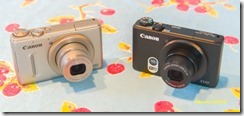- Photo Safaris
- Alaska Bears & Puffins World's best Alaskan Coastal Brown Bear photo experience. Small group size, idyllic location, deluxe lodging, and Puffins!
- Participant Guestbook & Testimonials Candid Feedback from our participants over the years from our photo safaris, tours and workshops. We don't think there is any better way to evaluate a possible trip or workshop than to find out what others thought.
- Custom Photo Tours, Safaris and Personal Instruction Over the years we've found that many of our clients & friends want to participate in one of our trips but the dates we've scheduled just don't work for them or they'd like a customized trip for their family or friends.
- Myanmar (Burma) Photo Tour Myanmar (Burma) Photo Tour December 2017 -- with Angkor Wat option
- Reviews Go hands-on
- Camera Reviews Hands-on with our favorite cameras
- Lens reviews Lenses tested
- Photo Accessories Reviews Reviews of useful Photo and Camera Accessories of interest to our readers
- Useful Tools & Gadgets Handy tools and gadgets we've found useful or essential in our work and want to share with you.
- What's In My Camera Bag The gear David Cardinal shoots with in the field and recommends, including bags and tools, and why
- Articles About photography
- Getting Started Some photography basics
- Travel photography lesson 1: Learning your camera Top skills you should learn before heading off on a trip
- Choosing a Colorspace Picking the right colorspace is essential for a proper workflow. We walk you through your options.
- Understanding Dynamic Range Understanding Dynamic Range
- Landscape Photography Tips from Yosemite Landscape Photography, It's All About Contrast
- Introduction to Shooting Raw Introduction to Raw Files and Raw Conversion by Dave Ryan
- Using Curves by Mike Russell Using Curves
- Copyright Registration Made Easy Copyright Registration Made Easy
- Guide to Image Resizing A Photographers' Guide to Image Resizing
- CCD Cleaning by Moose Peterson CCD Cleaning by Moose Peterson
- Profiling Your Printer Profiling Your Printer
- White Balance by Moose Peterson White Balance -- Are You RGB Savvy by Moose Peterson
- Photo Tips and Techniques Quick tips and pro tricks and techniques to rapidly improve your photography
- News Photo industry and related news and reviews from around the Internet, including from dpreview and CNET
- Getting Started Some photography basics
- Resources On the web
- My Camera Bag--What I Shoot With and Why The photo gear, travel equipment, clothing, bags and accessories that I shoot with and use and why.
- Datacolor Experts Blog Color gurus, including our own David Cardinal
- Amazon Affiliate Purchases made through this link help support our site and cost you absolutely nothing. Give it a try!
- Forums User to user
- Think Tank Photo Bags Intelligently designed photo bags that I love & rely on!
- Rent Lenses & Cameras Borrowlenses does a great job of providing timely services at a great price.
- Travel Insurance With the high cost of trips and possibility of medical issues abroad trip insurance is a must for peace of mind for overseas trips in particular.
- Moose Peterson's Site There isn't much that Moose doesn't know about nature and wildlife photography. You can't learn from anyone better.
- Journeys Unforgettable Africa Journeys Unforgettable -- Awesome African safari organizers. Let them know we sent you!
- Agoda International discounted hotel booking through Agoda
- Cardinal Photo Products on Zazzle A fun selection of great gift products made from a few of our favorite images.
- David Tobie's Gallery Innovative & creative art from the guy who knows more about color than nearly anyone else
- Galleries Our favorite images
Pocket point and shoot championship faceoff: Canon PowerShot S100 versus Canon PowerShot S110
Pocket point and shoot championship faceoff: Canon PowerShot S100 versus Canon PowerShot S110
Submitted by David Cardinal on Tue, 11/20/2012 - 07:52
 If you’re looking for a Black Friday electronics purchase and don’t need a big-screen TV, it might be worth considering an upgrade to your point and shoot. As far as cameras small enough to fit in your shirt pocket, no one makes them better than Canon. Canon has just updated the amazing Canon PowerShot S100 to the Canon PowerShot S110. We did a side by side comparison of the two to give you a perspective on whether it is worth the price for the newer model or you should take advantage of the great deals on the slightly older S100.
If you’re looking for a Black Friday electronics purchase and don’t need a big-screen TV, it might be worth considering an upgrade to your point and shoot. As far as cameras small enough to fit in your shirt pocket, no one makes them better than Canon. Canon has just updated the amazing Canon PowerShot S100 to the Canon PowerShot S110. We did a side by side comparison of the two to give you a perspective on whether it is worth the price for the newer model or you should take advantage of the great deals on the slightly older S100.
The model has changed, but the guts are the same
 Inside the Canon PowerShot S110 is very much like the Canon PowerShot S100 it replaces. It has the same 12MP 1/1.7” sensor, the same DIGIC 5 image processor, and an equivalent 24-120mm (35mm equivalent) f/2 – f/5.9 lens. Controls are essentially identical also. Canon has also improved the digital zoom capability of the S110, but since digital zoom is the first thing I turn off when I get a camera, that isn’t of much use to me, or to anyone else who is buying it to capture high-fidelity Raw files.
Inside the Canon PowerShot S110 is very much like the Canon PowerShot S100 it replaces. It has the same 12MP 1/1.7” sensor, the same DIGIC 5 image processor, and an equivalent 24-120mm (35mm equivalent) f/2 – f/5.9 lens. Controls are essentially identical also. Canon has also improved the digital zoom capability of the S110, but since digital zoom is the first thing I turn off when I get a camera, that isn’t of much use to me, or to anyone else who is buying it to capture high-fidelity Raw files.
Speaking of Raw files, The PowerShot superstars are without a doubt the best Raw file capture devices that can fit in a shirt pocket. With ISOs ranging up to 12,800 (for the S110 and 6400 for the S100) and clean, mid-resolution images (12MP), they’re an amazing blend of convenience, value, and functionality. Shutter lag has been improved (by 1/10 of a second). Curious about the higher ISO range on the S110, I wanted to know if that actually meant it was better in low light. From my test images, high ISO noise was just about identical on the two models for any specific ISO. So the higher ISO setting is a convenience if you need it, but doesn’t seem to reflect any better low-light image quality.
Both cameras are small – 2.3 x 3.9 x 1.1 inches for the S110 and weigh in at a fairly meager 7 ounces. They don’t compete with the tiny ELPH line for compactness, but if you want Raw files and potentially pro image quality, they’re as small as it gets. Note that I don’t expect cameras in this size to compete with the slightly larger breed (RX100, Lumix LX, Nikon 1, G15, PEN-3, etc.) If you want the ultimate small camera, those larger versions add features and performance, but if (like me) you have a DSLR for your main camera and want a second camera that fits in your shirt or hip pocket for use “in a pinch” the Canon PowerShots are a great option.
Canon PowerShot S110 adds WiFi and Touchscreen, loses GPS
 For hunt and peck aficionados, the S110 adds a touch screen. Personally, I’m not really a fan of touchscreens on my cameras, as I’d rather be able to control them with my fingers, and without having to look down. That’s more of an issue with DSLRS – where the controls are adequate without using the menus. For point and shoots, there is certainly merit to the argument that touch is a quicker solution than navigating menus. I’m not convinced it is any faster, but it certainly saves novice users from having to remember which control moves the menu cursor which way. To make a long story short, I’m not willing to pay more for a touchscreen on my camera, but you may be.
For hunt and peck aficionados, the S110 adds a touch screen. Personally, I’m not really a fan of touchscreens on my cameras, as I’d rather be able to control them with my fingers, and without having to look down. That’s more of an issue with DSLRS – where the controls are adequate without using the menus. For point and shoots, there is certainly merit to the argument that touch is a quicker solution than navigating menus. I’m not convinced it is any faster, but it certainly saves novice users from having to remember which control moves the menu cursor which way. To make a long story short, I’m not willing to pay more for a touchscreen on my camera, but you may be.
The touch screen does offer touch focus, which I think is a pretty cool feature. Of course it is easiest to use when nothing much is moving in the frame, which is when it is easiest to focus, period. Some people will also miss the small rubber grip strip on the S100.
The S110 also adds WiFi capability. It is a fairly complete replacement for a direct-cable connection, but not very imaginative. I’ve written about it before, comparing it to the radically different approach Nikon has used for the way its WU series adapters work. Canon uses a fairly cumbersome track logging approach over the WiFi connection to a smartphone to replace the native GPS functionality in the S100. That’s frankly a real shame. GPS should be getting added to more phones, not taken out of them, and the smartphone replacement is awkward and requires draining the battery on your smartphone just in case you want to use your camera. Personally, I’d vote to trade back and get GPS, even if it means giving up the fairly pedestrian WiFi interface.
My Vote: Get a Canon PowerShot S100 while you can
If you haven’t already invested in a modern, high-end point and shoot like the Lumix-LX5 or LX7, the Sony RX100, or the Canon PowerShot S95 or Canon PowerShot S100, I’d get the S100 for the great bargain it is (its now down to under $320) and save yourself $130 over the Canon PowerShot S110. In fact I did, and so far I’m quite happy.
- Log in to post comments

